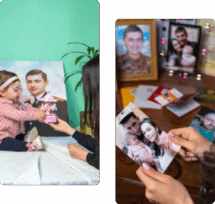The relevance of Zabel Yessayan’s words to the events unfolding in the homeland today is startling. Indeed, it is impossible to read Yessayan without the painful awareness of the precariousness of the situation of Armenians living in the homeland. The ongoing military operations, the humiliating treaties, the ultimatums and the false promises of peace, the “cleansing” of the indigenous Armenian population of Artsakh, all point to the closing of doors to the possibility of a peaceful existence for Armenians on their ancestral lands.
In “The New Bride,” a short story in On The Threshold: Key Texts on Armenians and Turks as Ottoman Subjects, the newly released compilation of a set of Yessayan’s “unread, misread or previously unknown” stories, translated and edited with an introduction by Dr. Nanor Kebranian (Gomidas Institute, 2023), Yessayan refers to the Muslim-Turkish murderers of the village population as “a horde of demons . . . of men raging with irreconcilable hatred and howling like beasts.” Commenting on the mood of “helplessness” and of “hopelessness” prevalent in Yessayan’s writing, “Armenians are and will continue to be perceived and treated as an alien race on their own native soil,” writes Kebranian. Indeed, to this day, the demons are running around, bloodier and more murderous than ever.
It is generally the oppressive customs and laws that impede Turkish women’s freedom that the stories expose. However, even when they deal with the massacres explicitly, they are, to borrow Kebranian’s words, “veiled expressions” of the conditions that deny humanity’s inalienable rights and the “many evils” that hinder progress in a despotic state. The Muslim woman is “a metaphor for the status of subjugated Ottoman subjects — notably, Armenians,” writes Kebranian.
“Is it possible to say that there is no great difference between the domestic, moral, public, etc., customs of Turkish women a hundred years ago and the ideas and practices of women today?” asks Yessayan in “The Namehram: Life as a Turkish Woman,” an essay that was first published in Azadamard Daily in Constantinople, in 1914. Yessayan’s words of indignation ring true today, more than a hundred years after they were written. They will probably ring true a hundred years from now as well, since the same tactics of terrorizing and of silencing are being implemented to wipe Armenia off the map. What for Yessayan was “a matter of urgency” is for Armenians today an existential threat.
Images of captivity abound in the stories and the essays assembled in the volume. Yessayan writes of “restrictions and torturous laws,” of women living in ”caged rooms” behind shadows and veils. In “The Wait,” Khalideh Hanum, one of the many women who have been released by their husbands, awaited the return of her beloved “in vain behind the bars of a locked cage . . . as [he] charged carefree through [his] life, encountering new joys along the way.” Likewise, Selimeh, “the new bride,” “paced around the confining cottage until she collapsed from exhaustion.” Her husband “terrifi[ed] her . . . She felt an urge to inflict harm,” writes Yessayan. Selimeh refuses to wear the diadem that had belonged to the adolescent Armenian bride her husband had killed, one of the “bleeding victims of those terrible events.” “The Turkish woman’s domestic life is replete with the most profound and hidden miseries,” writes Yessayan in “On The Question of Turkish Women’s Emancipation,” another essay originally published in 1914. “We must fling open the doors and windows to let the sunlight flood those caged rooms and dispel the remaining shadows and darkness and damp,” she adds in “The Namehram: Life as a Turkish Woman.”
The collection does in fact reveal Yessayan as a staunch advocate of a woman’s emancipation. The two essays cited above, “Namehram: Life as a Turkish Woman” and “On The Question of Turkish Women’s Emancipation,” read like feminist manifestos. Ironically however, the avid defender of women’s rights does not trust “feminism” as an ideology. “That poor word has become so laughable and is labeled with so many contradictory, meaningless, debatable, and, importantly, crude declarations and demands, that it is imperative to clarify just what we mean when we speak of women’s emancipation,” she writes. While the obvious goal remains the freeing of the female from subordination to the male, it also entails, in Yessayan’s words, “a broader social struggle.”








